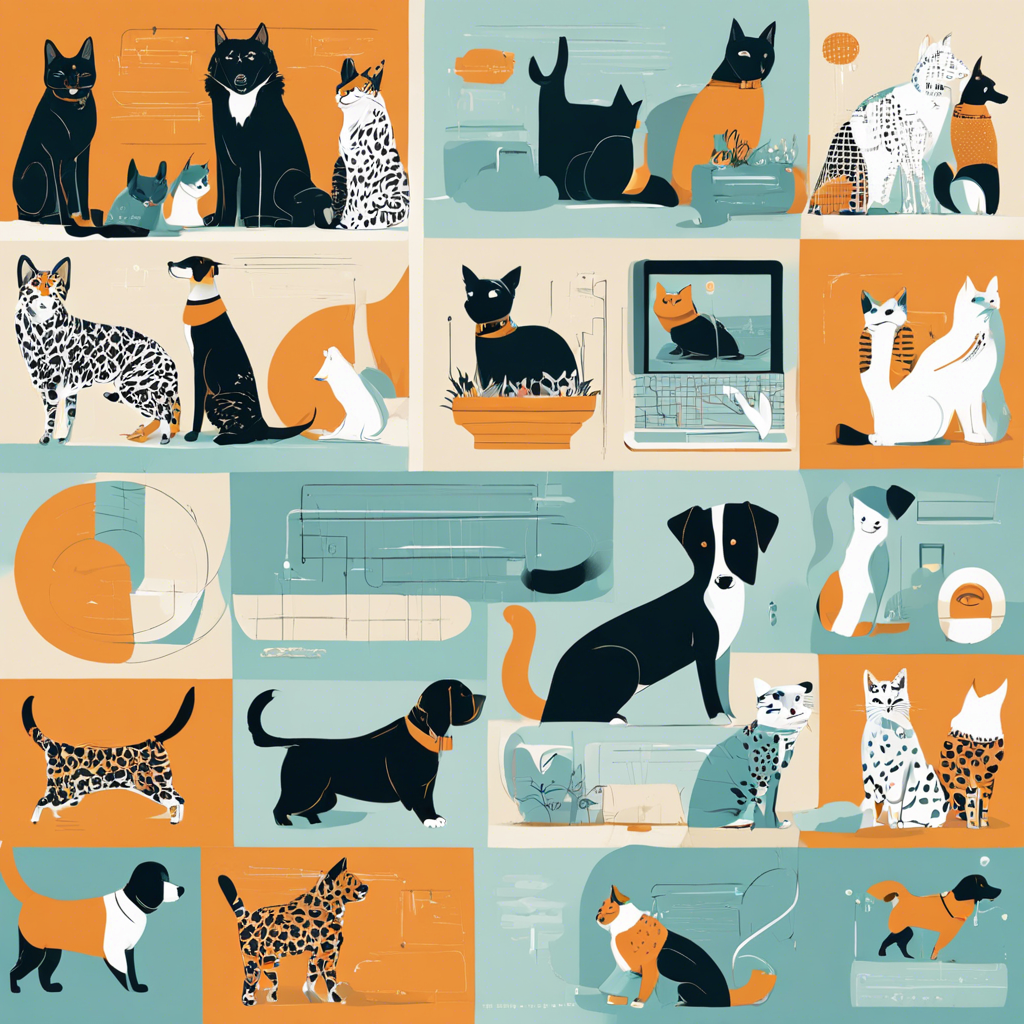Explore how pets enhance family bonding and communication, fostering meaningful connections and shared experiences.
In today’s fast-paced world, family communication often faces challenges as members juggle busy schedules and digital distractions. Amidst this, pet ownership emerges as a powerful catalyst for fostering stronger family bonds and improving communication patterns. This article delves into the myriad ways that pets, from dogs and cats to birds and beyond, impact family dynamics, promoting shared experiences, empathy, and emotional well-being.
##
The Bonding Power of Pets
Pet ownership has long been associated with numerous physical and mental health benefits, including reduced stress, improved mood, and increased physical activity. However, the impact of pets on family communication and relationships is equally profound. Research suggests that pets serve as social catalysts, bringing family members closer together and encouraging meaningful interactions.
###
Enhanced Family Interactions
A study published in the Journal of Marriage and Family (1) found that pets contribute to family bonding and communication, particularly in households with children. Pets provide a common interest and shared responsibility, prompting family members to engage in more frequent conversations and activities centered around the pet’s care and well-being. For instance, families may gather for daily walks with the dog or share moments of laughter and joy as they play with their cat.
###
Promoting Empathy and Emotional Development
Pets not only foster bonding but also promote the development of empathy and emotional intelligence among family members. Caring for a pet requires understanding their needs, recognizing their emotions, and responding appropriately. This process encourages family members, especially children, to become more attuned to the feelings and needs of others. Research by the American Humane Society (2) has shown that children who grow up with pets tend to exhibit higher levels of empathy and prosocial behavior, which can positively impact family relationships and communication.
##
Shared Experiences and Traditions
Pets contribute to the creation of shared experiences and family traditions, which play a vital role in strengthening family bonds and communication. Whether it’s dressing up the dog for Halloween or celebrating a pet’s birthday with a special treat, these memorable moments create a sense of unity and shared history.
Benefits of Shared Pet Activities
Engaging in activities such as taking the dog to the park or grooming the cat together provides opportunities for families to spend quality time together. These shared experiences foster a sense of team spirit and can help families create lasting memories.
##
Pet-Centric Communication
Pets also play a unique role in shaping family communication patterns. They become a central topic of conversation and a source of shared stories, jokes, and anecdotes. This pet-centric communication contributes to a more positive and light-hearted family atmosphere, encouraging open dialogue and laughter.
###
Pet Stories and Humor
Pet owners frequently share funny anecdotes and heartwarming tales about their furry friends. These stories become a source of entertainment and connection within the family. Laughter and shared humor strengthen familial bonds and create a safe space for open communication.
###
Impact on Family Atmosphere
The presence of pets in the household can influence the overall family atmosphere. Positive interactions with pets can create a more relaxed and joyful environment, reducing stress and tension among family members. This, in turn, fosters a more harmonious and communicative family dynamic.
##
Q&A: Addressing Common Questions
Here are some frequently asked questions about the impact of pet ownership on family communication patterns:
1. How do pets influence the quality of family relationships?
Pets serve as social catalysts, promoting bonding and positive interactions among family members. Their presence encourages shared experiences, empathy, and emotional connections, all of which contribute to stronger family relationships.
2. Can pets help improve communication within families?
Absolutely. Pets act as conversation starters and provide a common interest for family members to discuss. Conversations centered around pets create a positive and light-hearted atmosphere, fostering open communication and a sense of closeness.
3. What are the long-term benefits of pet ownership for family communication?
Pet ownership can have lasting positive effects on family communication. It encourages the development of empathy, enhances emotional intelligence, and creates shared traditions and memories. These factors contribute to a more cohesive and communicative family unit throughout life.
##
Conclusion
The impact of pet ownership on family communication patterns is undeniable. Pets serve as powerful catalysts for family bonding, fostering shared experiences, empathy, and positive interactions. As families engage in pet-centric activities and share stories, they create a unique and meaningful connection that enhances communication and strengthens familial bonds. The presence of pets in the home not only improves individual well-being but also contributes to the overall health and happiness of the entire family.
##
External Resources:
1. Pets as Family Members and the Communication of Family Rules by Lynn F. Owens and Colleen A. Janus.
2. Children as Pet Owners: Benefits for Children and Pets by the American Humane Society.
3. Enhancing family interactions with children: The role of pets by Megan K. Mueller et al.
